Disclosure: This article contains affiliate links. We may earn a commission from purchases at no extra cost to you, which helps our travel content.
The Ganges whispers ancient secrets as it flows through Rishikesh, carrying centuries of spiritual seekers' prayers downstream. When I arrived here last spring, exhausted from Chennai's corporate demands and seeking respite, I didn't expect to find mathematical perfection in the curves of temple domes or cosmic patterns in the morning mist rising off the river. Yet Rishikesh—this small Himalayan foothills town known as the 'Yoga Capital of the World'—revealed itself as a living mandala, each element perfectly positioned to guide travelers inward. After fifteen years analyzing financial risks in Chicago and three years adapting to Chennai's vibrant chaos, this month-long solo journey through Rishikesh's spiritual landscape offered something my risk manager's mind hadn't anticipated: a calculated surrender to something greater than spreadsheets and safety protocols.
Preparing for Sacred Immersion
My risk manager's mind approaches travel with methodical precision, but Rishikesh demands something different—a balance between preparation and openness to the unexpected. Before arriving, I spent evenings researching ashrams while sipping masala chai on my Chennai balcony, comparing programs and philosophies with the same attention I once gave to investment portfolios.
Rishikesh offers accommodations for every budget, but I chose a modest room at Parmarth Niketan Ashram (₹800/night, approximately $10) for its riverside location and traditional approach. The simplicity—a clean bed, basic bathroom, and vegetarian meals included—proved perfect for my purpose. Many travelers I met stayed in budget guesthouses along Laxman Jhula for ₹500-1000 per night, offering greater independence than ashram life.
Packing for a spiritual journey requires thoughtfulness. Beyond the obvious yoga attire (loose, modest clothing that respects local customs), I found my travel journal became an essential companion for processing the internal shifts happening alongside external adventures. The unlined pages welcomed both written reflections and geometric patterns I observed in temple architecture, prayer flags, and even the natural formations along the riverbanks.
Vaccinations and travel insurance remain non-negotiable for the analytical traveler, even on spiritual quests. I secured comprehensive coverage that included emergency evacuation—an unlikely need, but my risk assessment background doesn't take chances with remote locations.
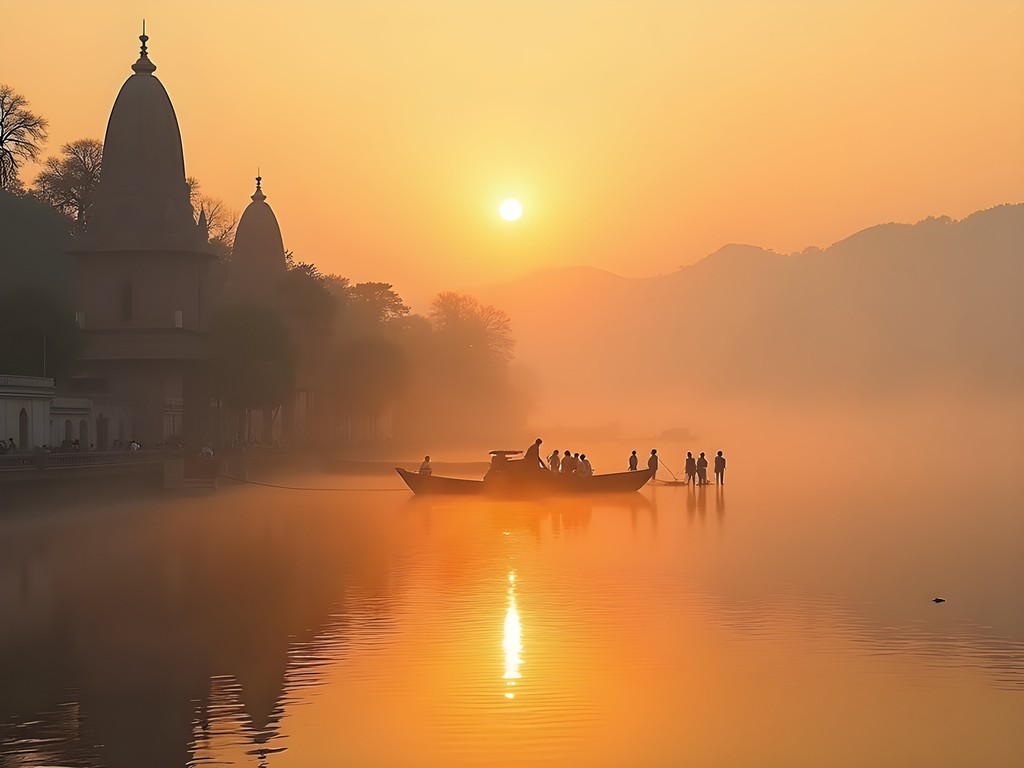
💡 Pro Tips
- Book ashram stays directly through their websites rather than third-party sites for better rates and accurate information about programs
- Pack modest, lightweight clothing that covers shoulders and knees for temple visits and yoga sessions
- Bring a reusable water bottle with built-in filter to reduce plastic waste and ensure safe drinking water
Daily Rhythms of Ashram Life
My month in Rishikesh began with a 5 AM wake-up bell that initially felt like torture to my jet-lagged body. By day three, however, I found myself awake before the bell, drawn to the riverbank where geometric patterns of light danced across the water as the sun emerged behind the foothills. The pre-dawn darkness holds a particular frequency here—a vibration you can almost touch.
A typical day followed a structure as ancient as the hills surrounding us:
- 5:30 AM: Meditation and pranayama (breathing exercises)
- 7:00 AM: Yoga asana practice
- 8:30 AM: Simple vegetarian breakfast
- 10:00 AM: Karma yoga (selfless service) or philosophy classes
- 1:00 PM: Lunch and rest
- 4:00 PM: Second yoga session or personal practice
- 6:00 PM: Evening meditation and Ganga Aarti ceremony
- 8:00 PM: Light dinner
- 9:30 PM: Lights out
While some Western travelers struggled with the simplicity and discipline, my years in Chennai had prepared me for the rhythm of Indian spiritual life. The structure provided a container for transformation—like the sacred geometric patterns I've studied across cultures, the boundaries create space for expansion within.
For personal practice between scheduled sessions, I found my travel yoga mat invaluable. Lightweight enough to carry to secluded spots along the river yet providing sufficient cushioning on stone ghats and temple floors, it became my portable sacred space throughout the journey.
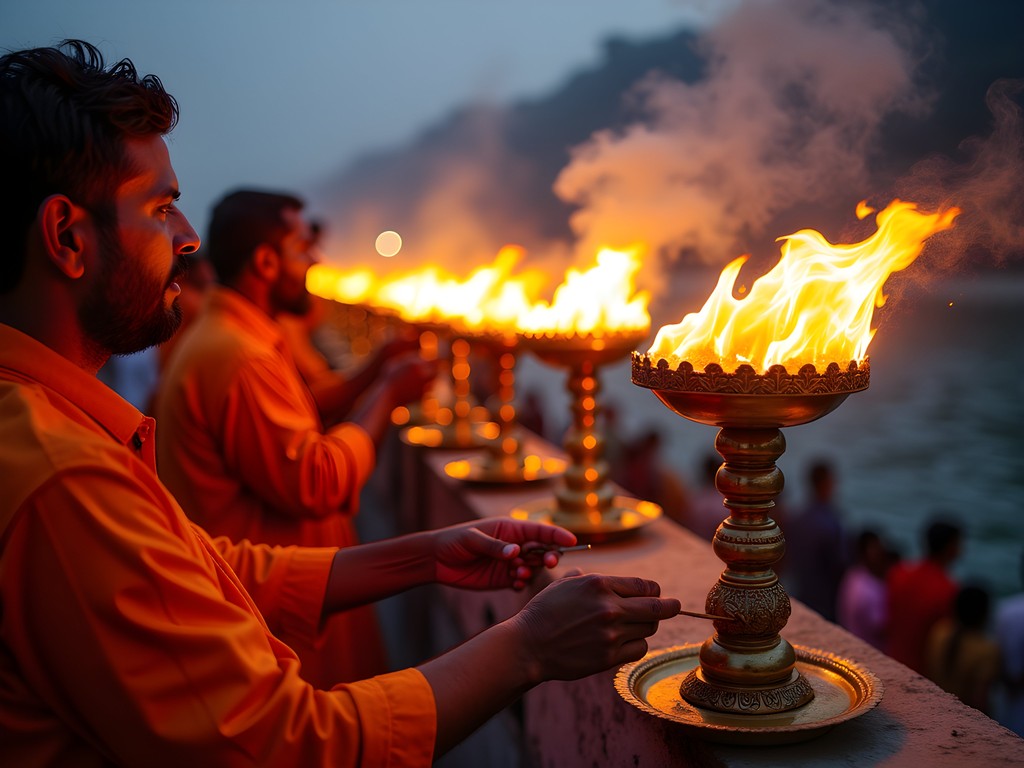
💡 Pro Tips
- Respect the ashram schedule even when it feels challenging—the structure is part of the transformative experience
- Build relationships with local teachers rather than ashram-hopping too frequently
- Drink only filtered or bottled water and eat at established vegetarian restaurants to avoid illness
Sacred Geometry in Himalayan Foothills
My fascination with sacred geometry—the mathematical patterns that appear across religious and spiritual traditions—found abundant expression in Rishikesh. From the obvious mandalas adorning temple walls to the subtle Fibonacci sequences in the spiral path leading to meditation caves, mathematical perfection surrounds spiritual seekers here.
During my third week, I joined a local guide for a day trek to nearby waterfalls, where he pointed out how the cascading water created perfect Golden Ratio patterns as it fell over ancient rock formations. "Nature is the first mathematician," he explained, echoing what I'd observed from Africa to Southeast Asia in my previous travels.
The Beatles Ashram (officially Chaurasi Kutia), where the famous band studied Transcendental Meditation in 1968, offers a fascinating study in geometric principles. Now abandoned and reclaimed by jungle, the meditation domes follow perfect proportional relationships that enhance acoustics and energy flow. I spent hours sketching the patterns in my journal, noting how the designs created specific effects on my mental state—something my risk manager's analytical mind found simultaneously puzzling and compelling.
For serious photographers wanting to capture these geometric wonders, I recommend a versatile travel tripod. The changing light conditions and intricate architectural details demand stability for sharp images, particularly during golden hour when the sunlight reveals hidden patterns in stone carvings and creates shadow mandalas across temple floors.

💡 Pro Tips
- Visit temples and meditation caves during early morning or late afternoon when angled sunlight reveals geometric patterns more clearly
- Bring a small sketchbook to record patterns you observe—drawing them connects you more deeply than photographs alone
- Respect photography restrictions at sacred sites; some patterns are meant to be experienced, not captured
Budget-Friendly Spiritual Exploration
Contrary to the commercialized spiritual tourism that has emerged in some parts of India, Rishikesh still offers authentic experiences for budget-conscious travelers. My month-long journey cost approximately ₹70,000 ($850) including accommodation, meals, classes, and local transportation—a fraction of what similar retreats would cost in Western countries.
The most profound experiences often came free of charge: watching sunrise over the Ganges, joining local devotees in spontaneous kirtan (devotional singing) sessions on the ghats, or sitting in meditation alongside sadhus who have renounced material possessions. These moments of connection transcended economic considerations.
For those with limited funds, many ashrams offer work-exchange programs where you contribute a few hours daily helping with meal preparation, garden maintenance, or cleaning in exchange for reduced rates. I spent several afternoons helping transcribe ancient texts at a small library attached to my ashram, an experience that provided unexpected insights into Vedic philosophy.
Meals in Rishikesh are remarkably affordable, with simple vegetarian thalis (complete meals) available for ₹50-100 at local eateries. For longer stays, I recommend establishing relationships with small family restaurants where quality and cleanliness are consistent. My favorite became Ramana's Garden Cafe, where proceeds support a local children's home and the organic ingredients come from their hillside garden.
Transportation costs remain minimal as Rishikesh is wonderfully walkable, though auto-rickshaws are available for longer distances. For day trips to nearby attractions like Neer Garh Waterfall or Kunjapuri Temple, sharing transportation with other travelers reduced costs while creating community connections.

💡 Pro Tips
- Negotiate monthly rates for accommodations—most places offer 30-50% discounts for longer stays
- Carry small denominations of rupees for donations at temples and offerings during ceremonies
- Purchase a local SIM card with data plan (approximately ₹500) for navigation and emergency communication
River Rituals and Personal Transformation
The Ganges River—Ganga Mata (Mother Ganges) to devotees—forms the spiritual backbone of Rishikesh. My daily ritual became watching the river's changing moods: turbulent and swollen after mountain rains, then serene and reflective during clear days. The water itself demonstrates sacred geometry in its flow patterns around rocks and sandbars, creating perfect vortices and spirals visible from the suspension bridges.
While many travelers come to Rishikesh seeking dramatic spiritual breakthroughs, I found transformation arrived in subtle geometric increments—daily practices gradually shifting internal landscapes. My risk manager's mind began recognizing patterns beyond spreadsheets, seeing how spiritual principles follow mathematical precision while remaining fluid and adaptable.
The evening Ganga Aarti ceremony at Parmarth Niketan became a cornerstone of my daily practice. As priests moved fire offerings in perfect circular motions while chanting ancient mantras, I observed how the community gathered in concentric rings around the ritual space—unconsciously creating a human mandala. These collective geometries appear across cultures when humans gather for spiritual purposes, something I've documented from Kenyan tribal ceremonies to Southeast Asian temple festivals.
For those planning extended meditation sessions along the river, I recommend a comfortable meditation cushion. The stone ghats become uncomfortable quickly without proper support, and maintaining proper posture significantly enhances meditation experiences. I carried mine to different spots along the river, discovering how different locations held distinct energetic qualities.
By my final week, I had established a personal map of power spots along the river—places where the natural geometry of rock formations, water patterns, and surrounding mountains created energetic vortices conducive to different practices. This personalized sacred geography became my parting gift from Rishikesh, a geometric understanding of landscape I've since applied to other destinations.

💡 Pro Tips
- Respect the Ganges as sacred—never dispose of trash in the river or use soaps/shampoos when bathing
- Participate in river rituals with sensitivity, observing first before joining
- Visit different ghats at various times of day to experience how changing light transforms the same location
Final Thoughts
Departing Rishikesh after a month of river rituals, yoga practices, and geometric contemplations, I carried more than photographs and journal entries. The sacred mathematics of this place had rearranged something fundamental in my perception—a risk manager's mind now capable of calculating the value of surrender alongside security. The Ganges continues flowing whether we observe its patterns or not, but something shifts permanently when we align ourselves with its ancient rhythms. For solo travelers seeking both structure and spiritual expansion, Rishikesh offers a perfectly calibrated equation: ancient wisdom + natural beauty + accessible practices = transformation within reach of any sincere seeker. Whether you come for a week or a month, allow the sacred geometry of this Himalayan sanctuary to work its mathematical magic on your perspective. The calculations will continue long after you've returned home.
✨ Key Takeaways
- Rishikesh offers authentic spiritual experiences at budget-friendly prices (approximately $850 for a full month including accommodation and meals)
- The geometric patterns in architecture, nature, and rituals provide a framework for personal transformation
- Balancing structured ashram practices with personal exploration creates the most meaningful experience
📋 Practical Information
Best Time to Visit
February through April, September through November
Budget Estimate
$800-1000 for a month, $300-400 for a week
Recommended Duration
Minimum one week, ideally 3-4 weeks
Difficulty Level
Intermediate

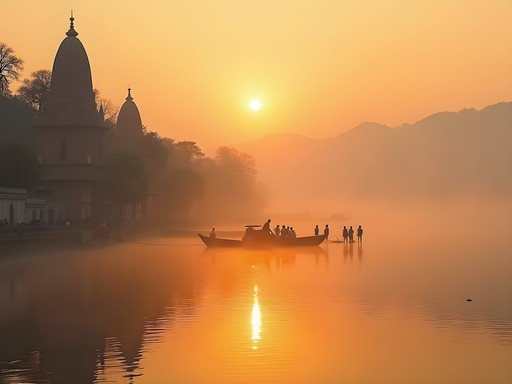



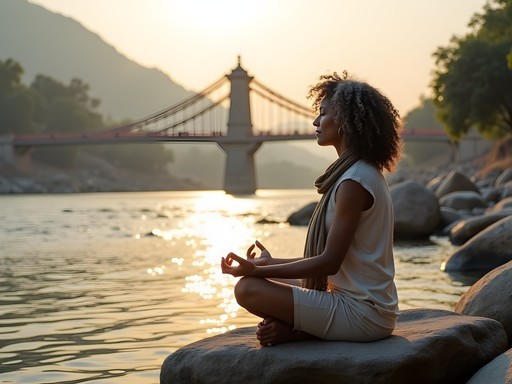


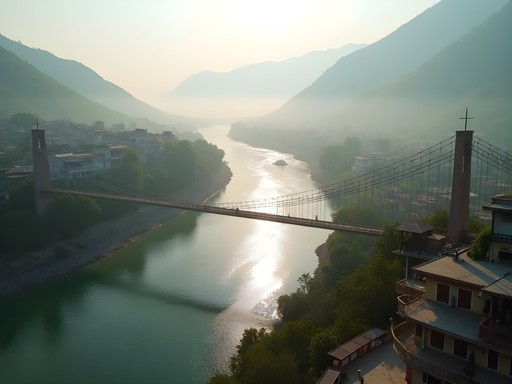







Comments
hikingway
Those sunrise photos by the Ganges are absolutely breathtaking! Rishikesh has been on my bucket list for years!
Jean Wells
You must go! The photos never quite capture the feeling of being there at dawn when the mist rises off the river. It's truly magical.
hikingway
That's what I keep hearing! Moving it to the top of my 2026 travel plans for sure!
journeyblogger
Your section on the daily rhythms of ashram life was so insightful! I've been considering a similar trip but wasn't sure if I could handle the discipline of ashram living for more than a week. Did you find it got easier as time went on? Also, which ashram did you stay at? I've been researching options but would love a personal recommendation.
Gregory Boyd
Zoe, your month-long immersion is impressive. Most travelers I meet rush through Rishikesh in 3-4 days, barely scratching the surface. I spent two weeks there during my backpacking journey across Northern India last year, and even that felt insufficient. The budget breakdown you provided is spot on - I found accommodation near the ashrams to be surprisingly affordable. One practical tip for others planning a similar journey: I found my meditation cushion to be essential for those long meditation sessions, especially when participating in the riverside ceremonies. Did you attend any of the evening aartis at Parmarth Niketan? Those were the highlight of my stay.
beachstar
How was the weather in spring? Planning a trip next March!
journeyblogger
Not the author but I was there last March and it was perfect! Not too hot during the day (around 25°C) and cool enough at night to sleep comfortably. Just bring layers for the evening meditation sessions by the river!
beachstar
Thanks so much! That's super helpful.
Jean Wells
Your description of the Ganges at dawn brought back vivid memories of my own time in Rishikesh three years ago. I found the rhythm of ashram life to be initially challenging but ultimately transformative. The balance between structured practice and personal contemplation is something I've tried to maintain since returning to my daily life in Yokohama. I'm particularly interested in your experience with the sacred geometry aspects - this wasn't something I explored deeply during my stay. Did you find any particular geometric patterns especially resonant with your spiritual practice?
hikingway
Jean - I was also fascinated by the sacred geometry part! Zoe, did you visit the Sri Yantra temple? That place blew my mind when I was there last year!
journeywalker
This is exactly what I needed to read right now. Been feeling so burnt out lately and dreaming of something like this.
wildperson
Just returned from Rishikesh myself and your post captures the essence so perfectly! I was nervous about going solo as a first-time visitor to India, but it ended up being the most welcoming place. The yoga community there is incredibly supportive. My biggest takeaway was learning to slow down - something I'm trying desperately to maintain now that I'm back in the daily grind. Your section on budget options was super helpful too - stayed at Yog Niketan based on blogs like yours and it was perfect. Did you ever try the cooking class at the organic cafe near Laxman Jhula? That was a highlight for me!
Zoe Kelly
So glad you had a wonderful experience! I missed that cooking class but it's on my list for next time. And yes, maintaining that pace of life back home is the real challenge, isn't it? I've found morning meditation helps - even 10 minutes keeps me connected to that Rishikesh feeling.
smartguide3149
Which ashram did you stay at? There are so many options, I'm feeling overwhelmed!
Zoe Kelly
I split my time between Sivananda Ashram and a small guesthouse near Ram Jhula. The ashram was more structured but gave me the discipline I needed. Happy to DM you more specific recommendations based on what you're looking for!
blueperson1761
Is it really possible to do Rishikesh on a budget? What were your monthly expenses like?
Zoe Kelly
Absolutely! My total for the month (including ashram stay, food, local transport and occasional treats) was under $600. Ashrams are incredibly affordable - between $10-20/day including meals. The simple living really keeps costs down.
Timothy Jenkins
Can confirm this! Rishikesh is one of the most affordable spiritual destinations globally. If you're willing to embrace simplicity, you can have a profound experience without breaking the bank.
tripbackpacker
How strict was your ashram about the schedule? Could you skip sessions if you wanted to explore the area?
Zoe Kelly
It varied! The first two weeks I stayed at a stricter ashram where attendance was expected at all sessions. My final two weeks were at a more flexible place that encouraged but didn't mandate participation. I'd recommend splitting your time like I did if you want both the disciplined experience and freedom to explore!
Venture X
Premium card with 2X miles, $300 travel credit, Priority Pass